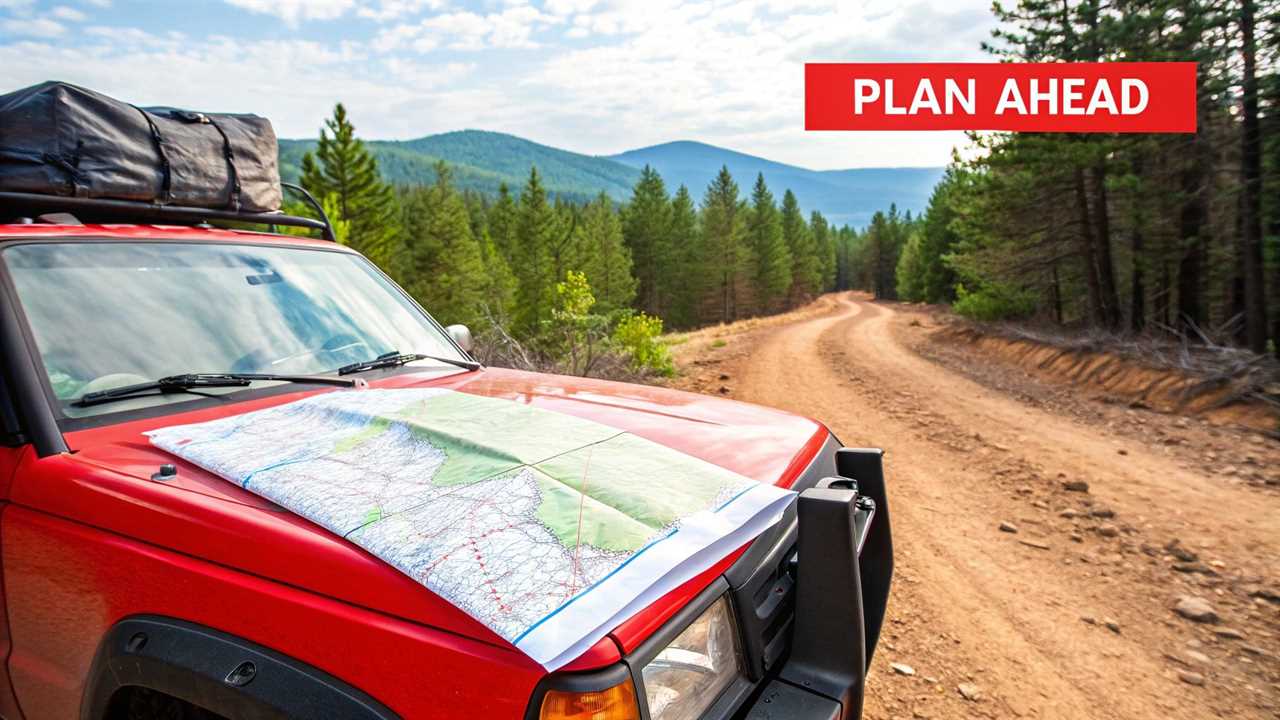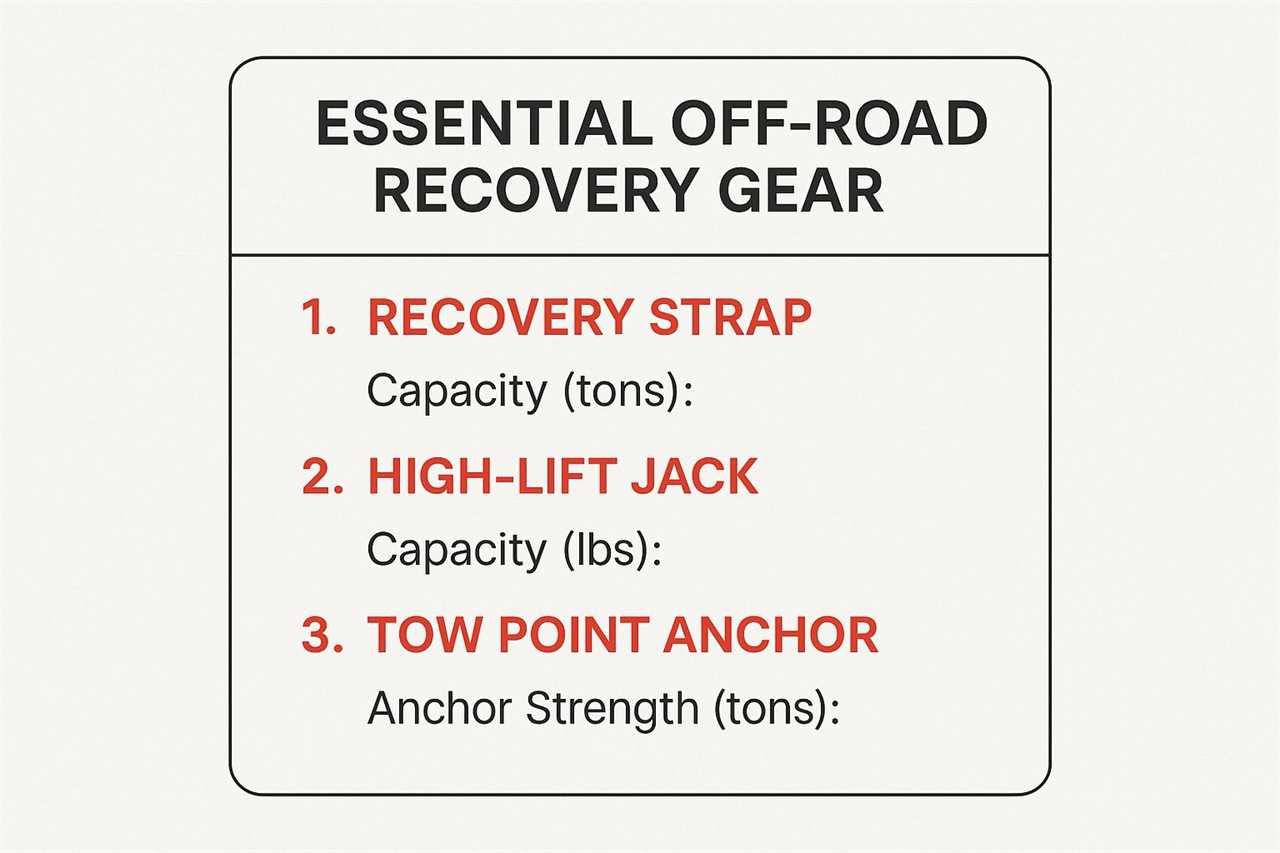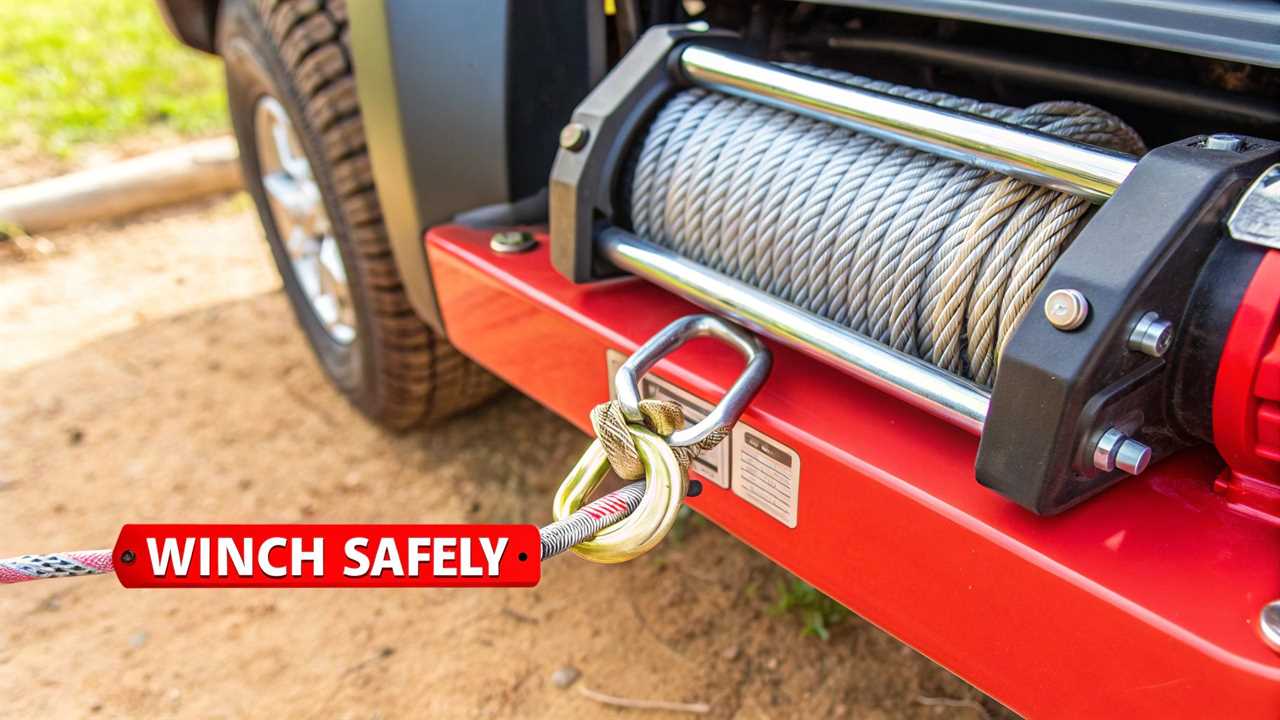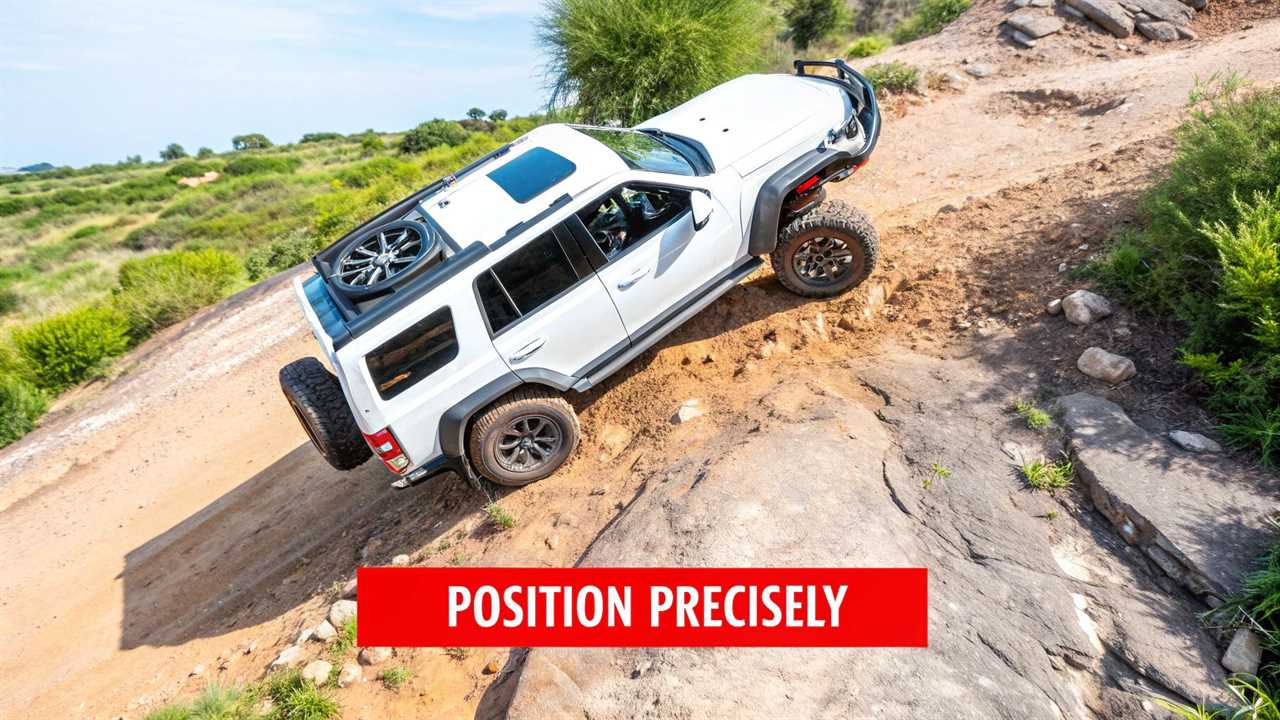It happens to the best of us. If you spend enough time on the trail, you’re going to get stuck. A successful off road vehicle recovery starts with a calm head, not a heavy foot on the gas.
Before you grab your gear, figure out why you’re stuck. This patience can save you from making a bad situation much worse.
What To Do When Your Vehicle Gets Stuck

Getting unstuck safely is a key skill. Resist the urge to floor it. That’s usually a recipe for digging yourself in deeper.
Take a moment to assess the problem. Are you high-centered on a rock, or are your tires just spinning in mud? The answer completely changes your recovery plan.
A simple loss of grip might be an easy fix with traction boards. Being high-centered is a different beast entirely, often requiring a winch or a high-lift jack.
Assess the Situation First
Okay, deep breath. If it’s safe, get out and do a full walk-around of your rig. Look at what’s happening with each tire and what’s under your chassis.
You are hunting for problems like hidden rocks, deep ruts, or soft sand. This helps you find the safest and most direct path out. For example, if you’re in mud, you need to find stable ground and the best angle to pull from.
I’ve seen it a hundred times: people rush. A rushed recovery is how gear breaks and people get hurt. A few minutes of careful assessment will save you hours of frustration.
Plan Your Escape Route
Once you know the problem, you can map out your escape. Keep it simple and focus on the path of least resistance. Sometimes, the best way out is the way you came in.
This problem-solving is what makes off-roading so addictive. The global off-road vehicle market was valued at USD 22.09 billion in 2022. It’s a sport that demands self-reliance and quick thinking.
You can discover more insights about this expanding market to see how many people are enjoying the adventure.
Your Essential Off Road Recovery Kit
Having the right equipment is only half the battle. Knowing why and how to use it is what gets you home safely. A solid kit is built on functional, life-saving essentials.
Before complex recoveries, ensure you have the basics. This includes a sturdy shovel, durable gloves, and properly rated connection points like D-ring shackles.
A critical distinction is between recovery straps and ropes. A static tow strap has virtually no stretch. It’s for towing a vehicle with all wheels rolling on a relatively flat surface.
A dynamic kinetic rope, however, is built to stretch. This elasticity stores and releases kinetic energy. It can “snatch” a deeply stuck vehicle out of mud or sand with a powerful but gentle pull.
Never use a static strap for a dynamic “snatch” recovery. The lack of stretch can send shockwaves through your vehicle. This can snap recovery points and turn shackles into deadly projectiles.
This is why understanding gear ratings is vital. Match your equipment’s strength to your vehicle’s weight and the forces of recovery.

Key Components for Safety
Beyond your main strap or rope, a few other items are non-negotiable for safe operations. First is a tree trunk protector. This wide, heavy-duty strap creates a solid anchor point around a tree.
Its width distributes force, protecting the tree and your expensive winch line from damage. Always connect your line or shackle to the protector, not directly to the tree.
Never use a trailer ball as a recovery point. They are not designed for lateral recovery forces and can snap off. Another critical tool is a winch line dampener.
This weighted blanket is draped over the line during a pull. If the line snaps, the dampener absorbs the violent energy, preventing it from whipping through the air.
Kinetic vs Static Recovery Gear Comparison
Understanding the differences between kinetic and static gear is crucial for safety. This table outlines the uses, advantages, and risks of each.
| Gear Type |
Primary Use |
Mechanism |
Best For |
Safety Warning |
| Kinetic Rope |
Dynamic vehicle recovery (“snatching”) |
Stretches to store and release kinetic energy |
Freeing a vehicle stuck in mud, sand, or snow |
Excellent, but requires training. Must use rated recovery points. |
| Static Strap |
Straight-line towing on flat ground |
No stretch; direct pull |
Towing a disabled but rolling vehicle on a road |
EXTREMELY DANGEROUS if used for snatching; can break gear. |
In short, kinetic gear is for recovering a stuck vehicle. Static gear is for towing a mobile one. Mistaking one for the other can have catastrophic results.
Building a complete kit takes time. To see what a comprehensive setup looks like, check our guide to the best off road recovery kit.
Mastering Basic Winching Techniques

A winch is a game-changer in off road vehicle recovery, but its power demands respect. A successful pull starts with a solid anchor point. Find a thick, healthy tree or a substantial boulder that won’t move.
When anchoring to a tree, you must use a tree trunk protector strap. Wrapping a bare winch line around a tree damages the bark and can fray your line. This simple gear spreads the load and gives you a secure connection.
Performing A Safe Winch Pull
Once you have your anchor, manage the line itself. Always wear heavy-duty gloves. This protects your hands from burrs, which are common with steel cable.
When you start the pull, engage the winch slowly to build tension. Avoid any sudden, jarring movements. Clear and constant communication is everything.
The winch operator and the driver of the stuck rig must be perfectly in sync.
The most critical safety step is using a winch line dampener. Draping one over the line mid-pull absorbs energy if the line snaps. This isn’t optional—it’s essential for keeping everyone safe.
For complex recoveries, a snatch block is your best friend. This pulley can double your winch’s capacity or redirect the line. To dive deeper into these techniques, you can learn more about how to use a winch.
How To Recover a Vehicle Without a Winch
Getting stuck is part of the game, but a winch isn’t always necessary. The right gear and a little know-how can get you rolling again. A kinetic recovery rope is one of the best tools for the job.
A kinetic rope is a game-changer compared to a static tow strap. It’s designed to stretch like a giant rubber band. As the recovery vehicle moves, the rope stretches and stores energy.
That energy then releases in a powerful but gentle “snatch.” This can pop a stuck vehicle out of mud or sand. It’s often more effective than a straight, static pull.
A word of caution: Using a kinetic rope isn’t about getting a massive running start. It’s a finesse move. The pulling vehicle needs a short, rolling start to load the rope. The goal is to build kinetic energy smoothly, not create a violent jolt.
Using Traction Boards and Other Smart Tricks
Traction boards are another must-have for your off road vehicle recovery kit. They’re fantastic, but only if used correctly. You can’t just toss them in front of the tire and hope for the best.
Placement is everything. You need to clear the mud, snow, or sand blocking the spinning tire. Then, wedge the board as far under the tire tread as you can at a gentle angle.
- In Sand or Mud: Dig a small ramp in front of your tires. This gives the tire a clear path to climb onto the board.
- In Snow: Pack the snow down firmly underneath the board to create a solid base. Otherwise, the board will just sink under weight.
Never forget the oldest trick: letting air out of your tires. Airing down increases the tire’s footprint for more grip. Sometimes, airing down and digging is all you need to drive out.
Recovery Safety and Clear Communication

When stuck in the backcountry, the goal is getting everyone home in one piece. This isn’t the time for heroics or rushing. A safety-first attitude must trump everything else.
Before starting, everyone involved needs to be on the same page about the plan. North America’s off-road vehicle market was a USD 6.31 billion industry in 2020. It’s expected to hit USD 10.97 billion by 2030.
With more people on trails, a shared safety culture is essential. You can dig into market trends in off-road vehicles if you’re curious.
Assigning Roles and Establishing Danger Zones
Every recovery needs a single, designated leader. This person calls the shots and keeps communication clear. You need one person operating the recovery vehicle and another in the stuck rig.
Everyone else is a spotter. Their most important job is to stay clear of the danger zone.
Before any tension goes into a line or strap, establish a clear “no-go” zone. A good rule is a radius of at least 1.5 times the length of the strap or cable. Nobody steps inside that zone during the pull.
After the vehicle is free, the job isn’t over. Do a post-recovery check on both vehicles. Look for new damage to bumpers, suspension, or anything underneath.
Finally, inspect your gear before packing it. Check straps and ropes for frays or cuts. You should have other top 10 safety items to bring during off-roading on every trip.
Got Questions? We’ve Got Answers
Even with the best gear and a plan, you might have questions on the trail. That’s normal. Getting answers builds confidence for your next recovery.
Let’s go over some common questions from fellow off-roaders.
Gear Inspection and Safe Practices
A great habit is checking your equipment. Before every trip, give your recovery gear a quick visual inspection. A much deeper check should happen at least twice a year.
Here’s a big one: “Can I hook my strap to the trailer hitch ball?” The answer is always a hard no. A trailer ball is designed for steady pulling force, not the shock of recovery.
It can snap off, becoming a deadly projectile. Always use a properly-rated recovery point bolted or welded to your vehicle’s frame.
If there’s one mistake I see people make, it’s rushing. Getting impatient is the fastest way to get hurt. It makes you skip steps and try dangerous things, risking your rig and your buddies.
Bigger Picture: Vehicle Security
Your safety doesn’t end when the recovery is over. These rigs we love are unfortunately prime targets for thieves.
It’s a bigger problem than you might think. The stolen vehicle recovery industry was valued at USD 11.61 billion in 2024. It is expected to grow to USD 21.33 billion by 2032.
You can read the full research about stolen vehicle recovery trends to see how serious vehicle security has become.
For more expert guides, gear reviews, and tutorials to master any terrain with confidence, visit us at Offroading.com. Explore our resources at https://www.offroading.com.
https://offroading.com/off-road-vehicle-recovery/?utm_source=rss&utm_medium=rss&utm_campaign=off-road-vehicle-recovery
Did you miss our previous article...
https://manstuffnews.com/4x4-off-road-cars/top-portable-water-filter-for-camping-in-2025
 Backyard GrillingWeekend WarriorsAdvice from DadBeard GroomingTV Shows for Guys4x4 Off-Road CarsMens FashionSports NewsAncient Archeology World NewsPrivacy PolicyTerms And Conditions
Backyard GrillingWeekend WarriorsAdvice from DadBeard GroomingTV Shows for Guys4x4 Off-Road CarsMens FashionSports NewsAncient Archeology World NewsPrivacy PolicyTerms And Conditions
